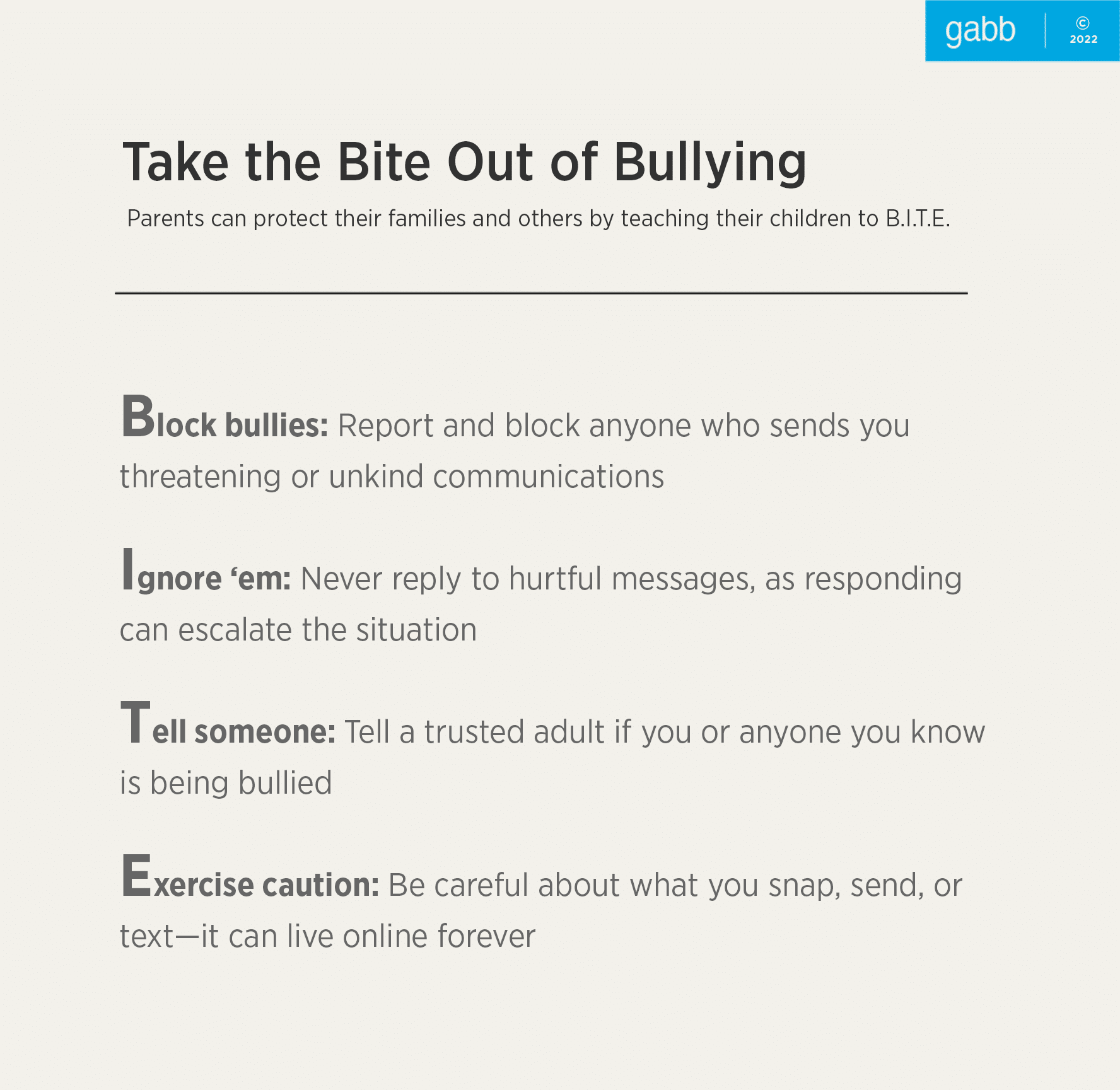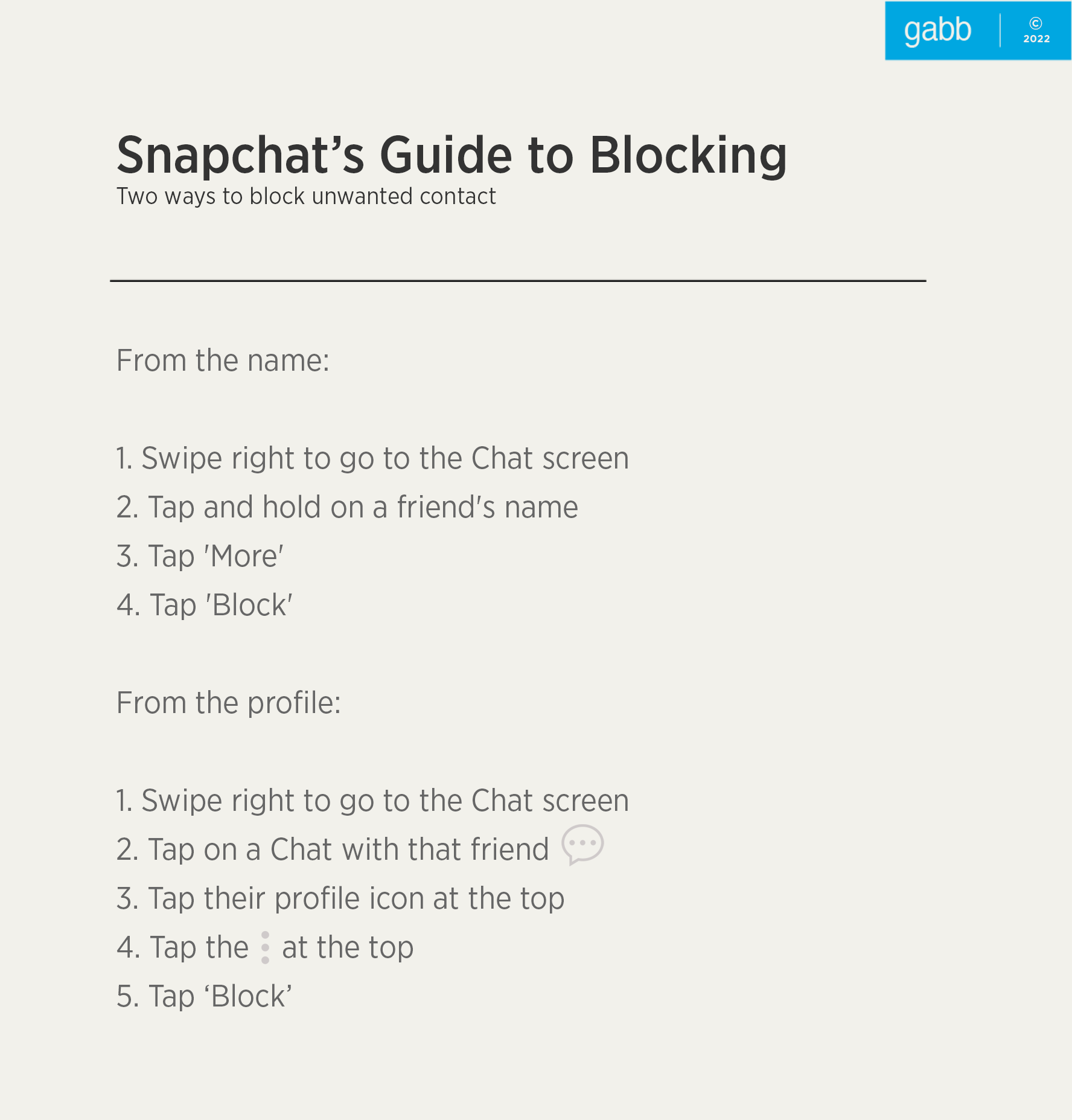Cyberbullying on Snapchat
Discover what Snapchat cyberbullying looks like and how kids can protect themselves
APR 20, 2022
Cyberbullying on Snapchat
Discover what Snapchat cyberbullying looks like and how kids can protect themselves
At a Glance
- What is a disappearing messaging system?
- Teens are reluctant to report abuse for these reasons
- Ensure your teen understands digital permanency
Even if children don’t have access to Snapchat, some of their friends do. It is common to see kids huddling around one person’s smartphone and discussing the latest ‘Snap’.
Having ongoing conversations about how bullying is particularly a problem on Snapchat can empower kids to recognize it and speak up for those being targeted.
What is Snapchat?
Since “81% of 14- to 22-year-olds” use social media either daily or almost constantly, it’s clear that our kids have come to rely on social apps like Snapchat as the way to communicate. [4]
So, to speak the language of teens, make sure to refer to their most-used social media app as ‘Snap’.
Snapchat is a social media platform that rapidly gained popularity for its one-of-a-kind feature—the vanishing message system.
The app claims this design mimics the flow of face-to-face interactions. Unfortunately, these disappearing messages are often weaponized as an ideal environment for cyberbullying.
In a world where 69% of teens use Snapchat regularly, knowing how it is used for bullying can help protect kids and empower families to address this issue together. [1]
35% of teens say they use Snapchat more than any other social platform.
69% of teens use Snapchat on a regular basis.
–Pew Research Center, 2018
How Does Cyberbullying Happen on Snapchat?
Snapchat’s disappearing message system leads bullies to believe they can act without consequence.
A harmful Snap in the form of a video or text is sent to an individual and then self-destructs after a few seconds.
While the message vanishes quickly, the hurt lasts much longer. Even worse, these messages can be sent to a group—aggravating the humiliation and inviting more of the ‘gang’ to join in.
Screenshots of the ensuing conversation pose an additional threat. When a victim responds, bullies often screenshot or record the message and use these to continue the bullying on other social media platforms.
What is meant to have vanished can now eternally spread the mockery to a larger audience.
Only 23% of high school victims of cyberbullying report the abuse to an adult.
–Anti-Defamation League, 2022
Why Don’t Cyberbullying Victims Report It?
Even though Snapchat has easy-to-access features for reporting aggression, shame and fear of retaliation deter children from disclosing to an adult. [2]
In fact, only 23% of high school victims of cyberbullying report the abuse. [2]

Sexting & Snapchat
Young people may not realize that explicit photos sent on Snapchat may not actually disappear.
“A teen whose cognitive and emotional development is still in relatively early stages may not understand that a post that has been retweeted or a photo temporarily posted on Snapchat can ‘go viral’ and remain permanently on the internet.” [3]
Because social networks are so vast in online spaces, there is no telling how many people could save and spread these messages—exposing victims to numerous sources of harassment.
Sextortion on Snapchat
The FBI recently revealed a dramatic increase in sextortion cases involving juveniles. [5]
Sextortion is the threat of sharing a nude or compromising photo online without the victim’s consent. Criminals also commonly threaten violence if the victim refuses to share additional images.
Because it is so easy to expand contacts on Snapchat, predators use this platform to find victims. Children are especially vulnerable to these threats.
Kids are groomed by predators who hide their identities. Children believe that requests for nude photos and videos are being made by someone their age who is interested in a romantic relationship. They are especially vulnerable because it is difficult to verify a stranger’s true identity.
Once exploited, children are scared and feel shame for having shared these images. Because of this, it is very difficult for them to ask for help from a trusted adult.
Experts recommend having open and frequent conversations about these crimes to protect young people.

Protecting Kids from Cyberbullies
Expiring messages can make victims question what they read and prevent them from asking for help. However, parents can help!
We can take steps to keep our kids safe by teaching them to recognize cyberbullying and setting boundaries around technology.
Each time our kids are engaged by an adult or anyone who makes them feel uncomfortable, prepare them with safety protocols to build competency.
In time, kids will learn to recognize cyberbullying and know what to do in dangerous situations.
If kids have been negatively influenced by someone online, they can ‘block’ that contact to prevent future access.
Young people who are aware of how to respond to cyberbullying are not only capable of protecting themselves, they can help protect their peers as well.
As parents, we can help by staying involved in our children’s digital lives and teaching them how to respond when they or someone they know is being bullied. Our efforts can and will make a difference.














Success!
Your comment has been submitted for review! We will notify you when it has been approved and posted!
Thank you!